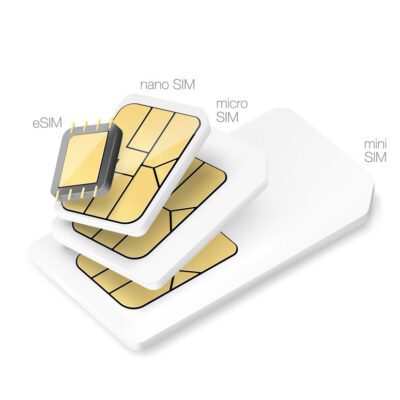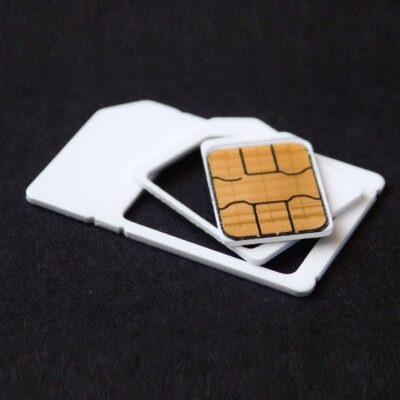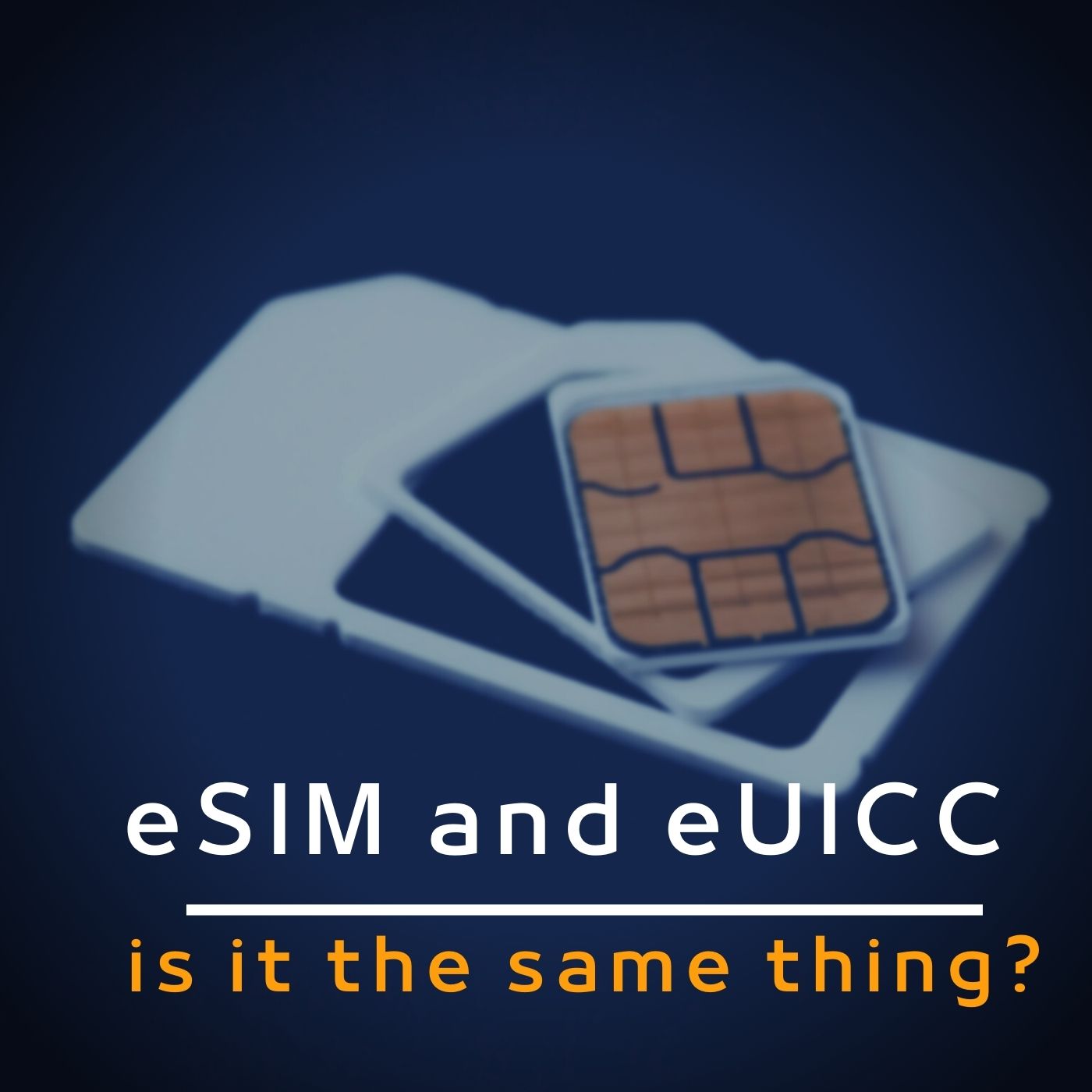In this post we are getting to the bottom with one of the most common misunderstandings when it comes to SIM-cards, eSIM and eUICC. Let´s begin with eUICC.
eUICC stands for Embedded Universal Integrated Circuit Card. It is a software component that can store multiple network profiles for different operators on a SIM card. Profiles that can be accessed and managed over the air, OTA (over-the-air). eUICC thus allows the subscriber to change mobile network operator or service provider without physically changing the SIM card. The technology simplifies for larger organizations, organizations with possibly large numbers of SIM cards where it is hard to change SIM cards due to the number of SIMs. It could also be valuable for companies with fewer but hard-to-reach SIM cards.
eSIM and eUICC are the same, or?
 Many people may have heard of eSIM and think that eUICC and eSIM are the same, but this is not the case. eSIM is a hardware component, a circuit version of the traditional SIM card, a component that can easily be soldered to a circuit board (eSIM refers to a specific SIM form factor – the MFF2 form factor, the only integratable form of SIM card). The initial intent was that eUICC SIM cards would be in the form of soldered chips or SIM cards implemented in a system on a chip (SOC). However, eUICC SIM cards can have any SIM form factors available today.
Many people may have heard of eSIM and think that eUICC and eSIM are the same, but this is not the case. eSIM is a hardware component, a circuit version of the traditional SIM card, a component that can easily be soldered to a circuit board (eSIM refers to a specific SIM form factor – the MFF2 form factor, the only integratable form of SIM card). The initial intent was that eUICC SIM cards would be in the form of soldered chips or SIM cards implemented in a system on a chip (SOC). However, eUICC SIM cards can have any SIM form factors available today.
A traditional SIM card contains a single Mobile Network Operator (MNO) profile and usually has 64 or 128 KB of memory. An eUICC can accommodate multiple profiles and is therefore slightly more demanding, requiring more memory, in this case, at least 512KB.
Not tied to specific hardware
The eUICC is not a hardware concept but a functional concept for handling SIM profiles. Installing eUICC on a device brings significant benefits to the hardware and the whole application. eUICC can store multiple operator profiles and switch between them remotely. They also have room for additional applications such as security features.
History of eUICC
Version 3.1 of the 2016 GSMA M2M eUICC standard enabled sufficient interoperability between technology vendors to make eUICC a plausible solution even in large-scale IoT systems. Since then, operators, hardware vendors, and service providers have worked hard to develop the technology, services, and systems that enable the technology to work.
For whom is eUICC a solution to consider?
 Changing SIM cards can be a logistical nightmare for organizations with devices spread globally and those in remote or hard-to-reach locations. One risk is that the prices offered by operators are also not the best. You simply have a poor bargaining position to change operators. Installing a SIM card with eUICC during manufacturing also saves production, distribution, and warehousing costs. It will be less demanding to support during a deployment or initial start-up and easier to keep track of systems in operation than delivering devices without a SIM card.
Changing SIM cards can be a logistical nightmare for organizations with devices spread globally and those in remote or hard-to-reach locations. One risk is that the prices offered by operators are also not the best. You simply have a poor bargaining position to change operators. Installing a SIM card with eUICC during manufacturing also saves production, distribution, and warehousing costs. It will be less demanding to support during a deployment or initial start-up and easier to keep track of systems in operation than delivering devices without a SIM card.
The success of eUICC requires thought, although much of the operators’ systems are standardized and allow for a smooth switch. eUICC makes it possible to switch operators remotely, but there are challenges when migrating the connection. For example, external connections may be interrupted due to the switch when IP addresses, phone numbers, etc., are changed. The interruption can affect the services that connect to your devices. Many with large numbers of SIM cards have customized service profiles, rules, and controls. You also have to factor in a potential disruption when switching operators, plus you need to have a backup for the devices that fail the update.
eUICC vs Multi IMSI
The article could have ended there, but there is an additional aspect we need to address, something called Multi-IMSI. IMSI, International Mobile Subscriber Identities, is a unique number that allows operators to authenticate subscribers and give them access to a particular network. IMSI is used to obtain information about the connected device to identify, authenticate and track the subscriber in a mobile network.
Multi-IMSI SIM cards are physical SIM cards and, like eUICC, come in all form factors. They contain multiple pre-loaded IMSI numbers or mobile subscriptions and are designed to provide access to multiple networks or roaming applications. So unlike traditional SIM cards, which have a single SIM IMSI, multi-IMSI cards contain multiple pre-installed IMSIs or mobile subscriptions.
The limitation with Multi-IMSI is that you constantly need active profiles as they need to be ready for an automatic switch – these active profiles tick money every month, and it can get quite expensive. Multi-IMSI solutions are also locked to the installed profiles. The SIM card must be physically replaced if a device goes outside the limits or range of the pre-configured networks.
Multi-IMSI can feel like a compromise. Most people today use roaming SIMs with a home network and the possibility to roam to other operators’ networks.
With eUICC SIM cards, the SIM card is moved from one network to another. With multi-IMSI, the connection remains with the original provider. So if one of them raises their charges or changes their terms, the only way to disconnect from them is to switch SIM cards. Which in most IoT applications is not possible.
The eUICC considers the benefits of a SIM card with multiple IMSI profiles. Multi-IMSI SIM may seem like a cheap solution now, but it is not necessarily future-proof. eUICC guarantees flexibility in the future as well.

